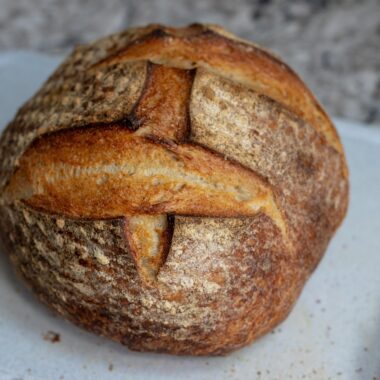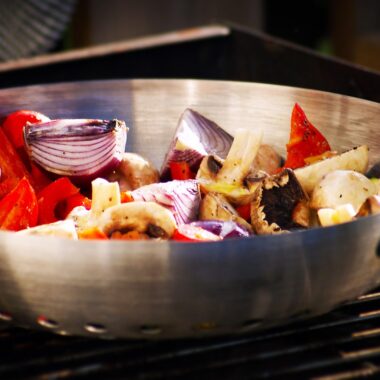Have you ever found yourself irresistibly drawn to the smell of freshly baked cookies, the tang of a salty pretzel, or the creamy comfort of chocolate melting in your mouth? Food cravings are universal, yet deeply personal. They strike without warning, often defying logic or dietary goals. But why do we crave certain foods? The answer lies at the intersection of biology, psychology, evolution, and culture—a fascinating blend that reveals as much about our minds as it does about our taste buds.
In this exploration, we’ll unpack the science and psychology behind cravings, from the primal instincts that drive us to seek sugar and fat to the emotional triggers that turn a simple snack into a source of solace. Taste is more than just a sensory experience; it’s a window into how our brains process pleasure, memory, and survival.
The Biological Roots of Cravings
At its core, our craving for certain foods is a legacy of evolution. Humans evolved in environments where food was scarce and unpredictable. Our ancestors who survived were those who sought out calorie-dense, nutrient-rich foods—think ripe fruits loaded with sugar or fatty meats packed with energy. This survival mechanism is hardwired into our brains, particularly in the reward system, which includes structures like the nucleus accumbens and the release of neurotransmitters like dopamine.
Dopamine, often dubbed the “feel-good” chemical, surges when we eat foods high in sugar, fat, or salt. These nutrients signal to our brain that we’ve hit the nutritional jackpot, reinforcing the behavior. For example, biting into a piece of chocolate doesn’t just taste good—it triggers a cascade of pleasure signals that make us want more. This reward loop was a lifesaver in prehistoric times, ensuring we’d prioritize energy-rich foods over less calorific options like leaves or bark.
Modern life, however, flips this script. We no longer need to hunt or forage; food is abundant, especially the ultra-processed kind engineered to exploit this ancient wiring. A bag of potato chips, with its perfect balance of salt, fat, and crunch, lights up our brain’s reward center far more intensely than a plain carrot ever could. Food scientists call this the “bliss point”—the precise combination of flavors and textures that makes a food irresistible. Our biology hasn’t caught up to this reality, leaving us vulnerable to cravings for foods that, in excess, can harm rather than sustain us.
Taste: The Gateway to Craving
Taste itself is a key player in this story. Humans perceive five basic tastes: sweet, salty, sour, bitter, and umami (savory). Each evolved to serve a purpose. Sweetness signals energy-rich carbohydrates, salt indicates essential minerals, sourness can warn of spoilage or unripeness, bitterness often flags potential toxins, and umami points to protein. Our cravings tend to skew toward sweet, salty, and umami because these tastes align with survival needs.
But taste is only part of the equation. The sensation of eating—what scientists call “mouthfeel”—amplifies cravings. The creaminess of ice cream, the crisp snap of a potato chip, or the chewiness of a gummy bear all enhance the experience, making certain foods more crave-worthy than others. This sensory interplay is why a soggy fry rarely inspires the same longing as its golden, crunchy counterpart.
Interestingly, our taste preferences aren’t static. They’re shaped early in life, even before birth. Studies show that a mother’s diet during pregnancy can influence her child’s flavor preferences. If she eats a lot of garlic or spicy foods, those flavors seep into the amniotic fluid, subtly priming the baby’s palate. After birth, breast milk carries similar flavor cues, further molding taste. By the time we’re adults, our cravings are a tapestry woven from genetics, early exposure, and personal experience.
The Psychology of Craving: Beyond Hunger
While biology lays the foundation, psychology builds the house. Cravings often have little to do with physical hunger. How many times have you craved a slice of pizza right after a full meal? This disconnect hints at the emotional and cognitive layers of taste.
One major psychological driver is stress. When cortisol—the stress hormone—spikes, it can trigger cravings for “comfort foods,” typically those high in sugar or fat. This isn’t just indulgence; it’s a coping mechanism. Research shows that these foods dampen the stress response in the brain, offering temporary relief. A 2015 study in Neuron found that stressed rats preferred sugary drinks over water, mirroring human behavior. In moments of anxiety, a bowl of mac and cheese feels like a hug from the inside out.
Memory also plays a starring role. Taste is tightly linked to the hippocampus, the brain’s memory hub. A single bite of your grandmother’s apple pie can transport you back to childhood Thanksgivings, evoking warmth and nostalgia. These associations cement certain foods as emotional anchors, making us crave them not for their flavor alone, but for the feelings they resurrect. Marketers know this well—think of holiday campaigns pushing pumpkin spice or peppermint mocha, banking on our sentimental ties to seasonal tastes.
Then there’s the power of anticipation. The mere thought of a food can spark a craving. Seeing a burger ad on TV or smelling fresh bread wafting from a bakery primes your brain, increasing dopamine even before you take a bite. This “cue-induced craving” explains why scrolling through food photos on social media can leave you ravenous. Our minds are wired to chase the promise of pleasure, often more intensely than the pleasure itself.
Culture and Conditioning
Cravings aren’t just personal—they’re cultural. What we crave often reflects where we grew up and the norms we absorbed. In Japan, umami-rich foods like miso soup or sushi might top the list, while in Mexico, the spicy kick of chili-laden dishes reigns supreme. In the U.S., the iconic trio of burgers, fries, and milkshakes dominates, a testament to decades of cultural conditioning through advertising and tradition.
Social learning shapes this too. If your family celebrated with pizza every Friday night, that ritual likely etched itself into your craving profile. Conversely, foods you were forced to eat as a kid—like overcooked Brussels sprouts—might repel you as an adult, even if your taste buds have matured. This interplay of exposure and emotion is why cravings can feel so idiosyncratic: your love for pickled herring might baffle your friend who grew up on peanut butter.
Gender stereotypes also sneak in. Society often paints chocolate as a “woman’s craving,” tied to romance or PMS, while men are nudged toward hearty, meaty options. Though these tropes are oversimplified, they influence how we perceive and express our desires. A 2019 study in Appetite found that women report more frequent cravings for sweets, while men lean toward savory—patterns that may owe as much to culture as to biology.
The Dark Side of Cravings
Not all cravings are benign. For some, they spiral into obsession or signal deeper issues. In cases of disordered eating, cravings can become a battleground, with guilt shadowing every indulgence. Conditions like pica—craving non-food items like dirt or chalk—can point to nutritional deficiencies or psychological distress. Even in healthy individuals, chronic overindulgence in craved foods can lead to obesity, diabetes, or heart disease, turning an evolutionary advantage into a modern curse.
Addiction science offers another lens. Highly processed foods share traits with addictive substances: they’re fast-acting, intensely rewarding, and hard to resist. A 2015 study in PLOS ONE rated pizza, chocolate, and chips as more “addictive” than alcohol or tobacco for some participants, based on their compulsive consumption. This doesn’t mean cravings are inherently bad—moderation is key—but it underscores their power over us.
Mastering the Crave
So, can we control our cravings? Yes, to an extent. Awareness is the first step. Recognizing whether a craving stems from hunger, stress, or boredom allows us to respond thoughtfully. Substitution can work too—swapping candy for fruit satisfies sweetness without the sugar crash. Mindfulness techniques, like savoring each bite slowly, can stretch satisfaction further, reducing the urge to overeat.
Environment matters immensely. Keeping trigger foods out of sight—or out of the house—cuts down on cue-induced cravings. A 2020 study in Nature Communications found that people ate less junk food when it was stored in opaque containers rather than clear ones. Small tweaks like these harness our psychology against itself.
Finally, embracing cravings without shame can paradoxically loosen their grip. Food is joy, connection, and survival rolled into one. Denying that risks amplifying the craving through deprivation. A balanced approach—indulging occasionally while nourishing ourselves consistently—honors both our biology and our humanity.
Conclusion: The Taste of Being Human
Why do we crave certain foods? It’s a question with no single answer. Our taste buds, wired for survival, dance with a brain that seeks pleasure, comfort, and meaning. Cravings are a dialogue between our past and present, our bodies and minds, our instincts and our choices. They remind us that eating is never just fueling—it’s feeling.
The next time you crave a slice of cake or a handful of fries, pause. What’s driving it? A dip in energy, a rough day, or simply the memory of a happier moment? Whatever the reason, that craving is a piece of your story—a testament to the intricate, messy, delicious psychology of taste.


















